
He’s whipping up an impromptu lunch; linguini in garlic sauce, mushrooms, grilled prawns, chicken and a dollop of warm goat cheese served with bread hot out of the oven. It’s fresh and delicious and just happens to pair with both the wintry day outside and the wines spread out on the table inside.
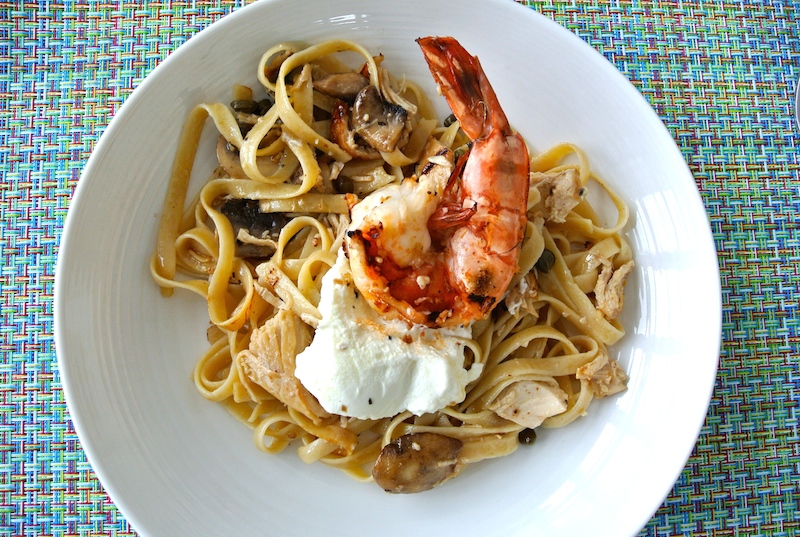
Graham Rennie, businessman, grape grower and owner (along with his wife Christine) of Rennie Estate Winery, is a man of taste who knows his way around a stove. Food and wine is important to him; it is a huge part of his lifestyle and a big reason why he and his wife moved from Oakville and invested in Niagara’s Beamsville Bench.
Rennie and his family purchased the Heron Pond Benchland Vineyard in 1997, a 50-acre site located on the Beamsville Bench.
The character of the grapes grown there are influenced by the considerable limestone deposits found within the calciferous clay and loam rich soils which are carved out of the escarpment and forests that surround the vineyard.
The site is one of the oldest vineyards on the bench, and was a producing vineyard in the early 1960s. The vineyard is surrounded to the east by woodlands and ponds, to the north by Lake Ontario, and to the south by the protective shield of the Niagara escarpment.
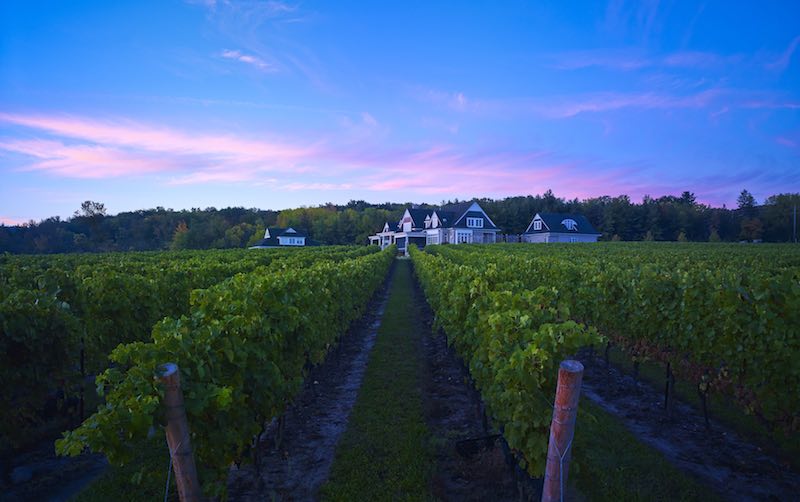
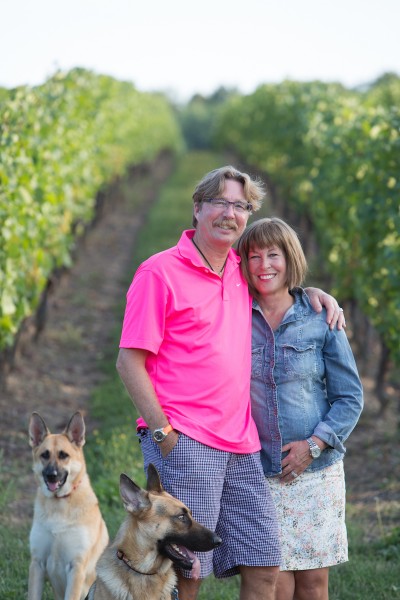 After leveling, grading, and under-draining the property in 1998, Graham planted five varietals in 1999. He sourced Chardonnay (Dijon clone 76), Pinot Noir (Dijon clone 113) Cabernet Sauvignon (clone 169), Cabernet Franc (clone 210) and Merlot (clone 184) from the Mercier nursery in France. The vineyard was planted in the spring of 1999 with spacing at 1275 vines per acre with 8 feet wide rows. The varietal mix is 28% Pinot Noir, 17% Chardonnay, 20% Merlot, 20% Cabernet Franc and 15% Cabernet Sauvignon.
After leveling, grading, and under-draining the property in 1998, Graham planted five varietals in 1999. He sourced Chardonnay (Dijon clone 76), Pinot Noir (Dijon clone 113) Cabernet Sauvignon (clone 169), Cabernet Franc (clone 210) and Merlot (clone 184) from the Mercier nursery in France. The vineyard was planted in the spring of 1999 with spacing at 1275 vines per acre with 8 feet wide rows. The varietal mix is 28% Pinot Noir, 17% Chardonnay, 20% Merlot, 20% Cabernet Franc and 15% Cabernet Sauvignon.
It is the goal of Rennie to make boutique wines that possess all of the elements of greatness — balance and power combined with elegance, complexity and wines that have the ability to age and improve in the bottle. Perhaps most importantly, he believes the wines should reflect the unique terroir of the escarpment benchland vineyard site.
To achieve those goals, says Rennie, “we practice sustainable viticulture, maintain low yields, hand harvest, apply innovative winemaking techniques and use premium oak barrels that are aged to our specifications and produced by select French cooperages.”
Most of the grapes on the property are sold to other wineries in Niagara for top bottlings but Graham keeps a small amount for his own tidy portfolio of boutique wines made by Malivoire winemaker (and neighbour) Shiraz Mottiar.
It is a limited collection of wines all made from estate grapes: Chardonnay, Pinot Noir, a ripasso-style red blend, an appassimento-style red blend and, for the first time, a super-appassimento-style blend.
As there isn’t a winemaking facility at the Rennie estate, the wines are crafted by Mottiar at the Malivoire winery and sold through the retail store there or by direct order from the website.
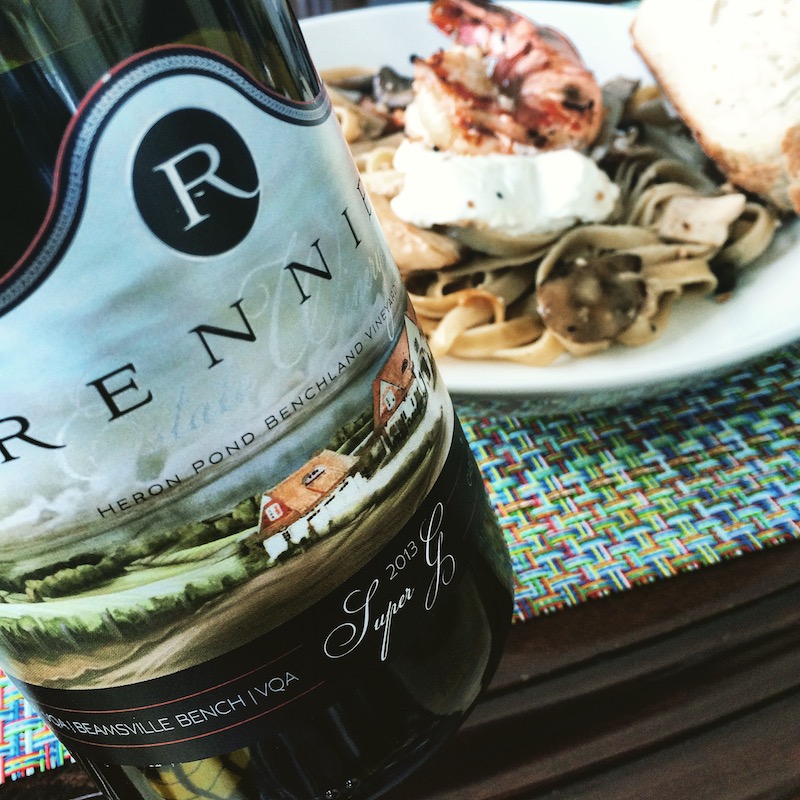
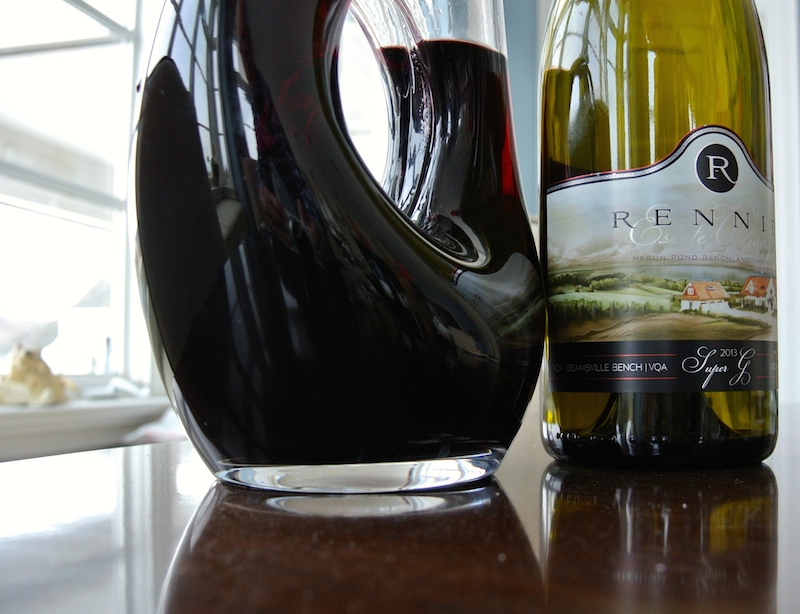
We are tasting the 2013 lineup of wines on this day, a collection of the four staples in the portfolio and a new wine — the Rennie Estate Super G, a big bruiser of a wine made from 100% Cabernet Sauvignon with the grapes dried appassimento-style for 86 days with 100% of the fruit aged in new French oak barrels. It clocks in at 16% abv. and, by any definition, it’s a substantial and meaty wine that both Rennie and Mottiar feel is far too young to release.
With a big plate of pasta on our plates, it’s a tasty treat and (one senses) the wine that Rennie will reach for when his pals drop by unexpectedly.
Here’s the new lineup of four wines from the 2013 vintage now available for sale at the Malivoire retail store.

Rennie Estate Paradox Pinot Noir 2013 ($40, 92 points) — Mottiar calls this the “most feminine wine we’ve made.” This Pinot is bottled unfiltered after 18 months in French oak, only 38% of it new. It’s gorgeously fragrant with cherry/raspberry fruit, vanilla, clove and nutmeg spices on the nose. The palate reveals cherry, beetroot, cranberry, raspberry, bramble and mineral notes to go with a range of oak barrel spices that’s all lifted by bright acidity. Will improve with time in the cellar.

Rennie Estate Christine Chardonnay 2013 ($35, 91 points) — “It’s nice to see a little bit of power by pushing the boundaries of new oak,” commented Mottiar, referring to the 18 months two-thirds of the fruit spent in French oak barrels. Even with all that oak, the fruit still dominates on the nose with poached pear, baked apple and toasted spice aromas to go with a flinty minerality note. It’s a substantial Chard on the palate but still has bright acidity to lift the rich pear, perky citrus, green apple, grilled pineapple and toasted wood spice notes. The finish is clean and fresh with good length.

Rennie Estate Scarpata 2013 ($45, 90 points) — Scarpata is Rennie’s Ripasso-style wine that this year is made from 100% Cabernet Sauvignon (2012 it was Merlot) grapes. Mottiar passes the Cab Sauv juice through the skins of the appassimento “G” grapes (Merlot, Cab Sauv and Cab Franc) to add complexity and structure. The nose shows expressive plum, blackberry, currants, cocoa, nutmeg, Cuban cigar leaf, caramel and a truffle note. It brings some heat on the palate with 15.5% abv. but is somewhat tempered by the rich, bold array of dark fruits, range of baking spices, pepper, licorice, chewy tannins and firm structure. Call it “Cabernet squared,” says Rennie.

Rennie Estate G 2013 ($55, 93 points) — An appassimento-style blend of Merlot, Cabernet Sauvignon and Cabernet Franc that’s dried for up to 106 days. The grapes are picked early to ensure “clean” fruit at 22 Brix and then sent to the drying chamber where 30% of the fruit is lost to dehydration. Mottiar is looking for higher Brix of 28 or so without fruit breakdown and then the fruit is aged for 20 months in 40% new French oak barrels. The alcohol is about 16% abv. “This wine is more about fruit, balance and power,” Mottiar says. It is powerful in every way. The nose reveals rich cherry pie, raspberry compote, crushed black currants, graphite, forest floor, kirsch, dried herbs, bramble and toasted oak spices. It’s unfair to drink this now, with that mass of ripe, firm tannins, but underneath there is a range of saturated and highly extracted red and dark fruits to go with expressive vanilla-nutmeg-caramel spices, anise/licorice notes and earth that’s all a little disjointed at the moment. Wait for it, five or 10 years, or throw a huge hunk of beef of the BBQ and enjoy.







Comment here